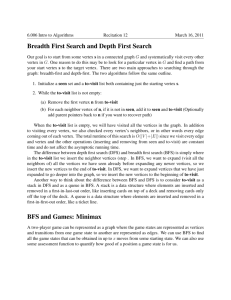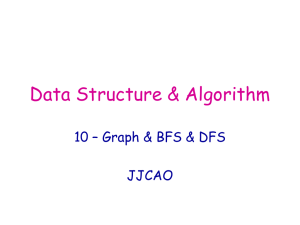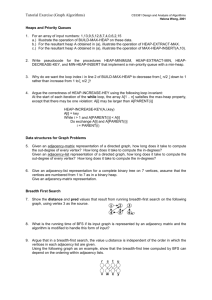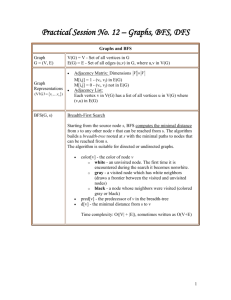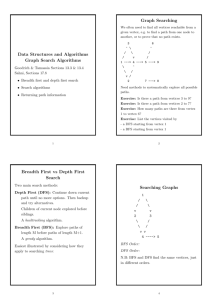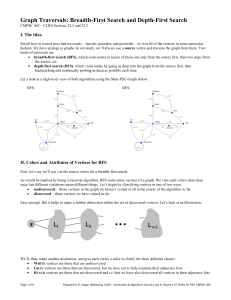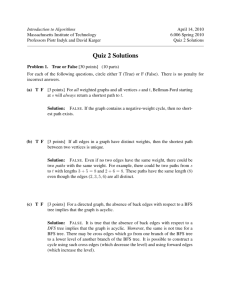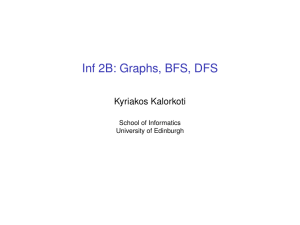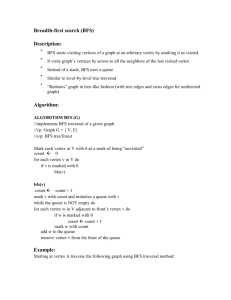Graph Theory
advertisement
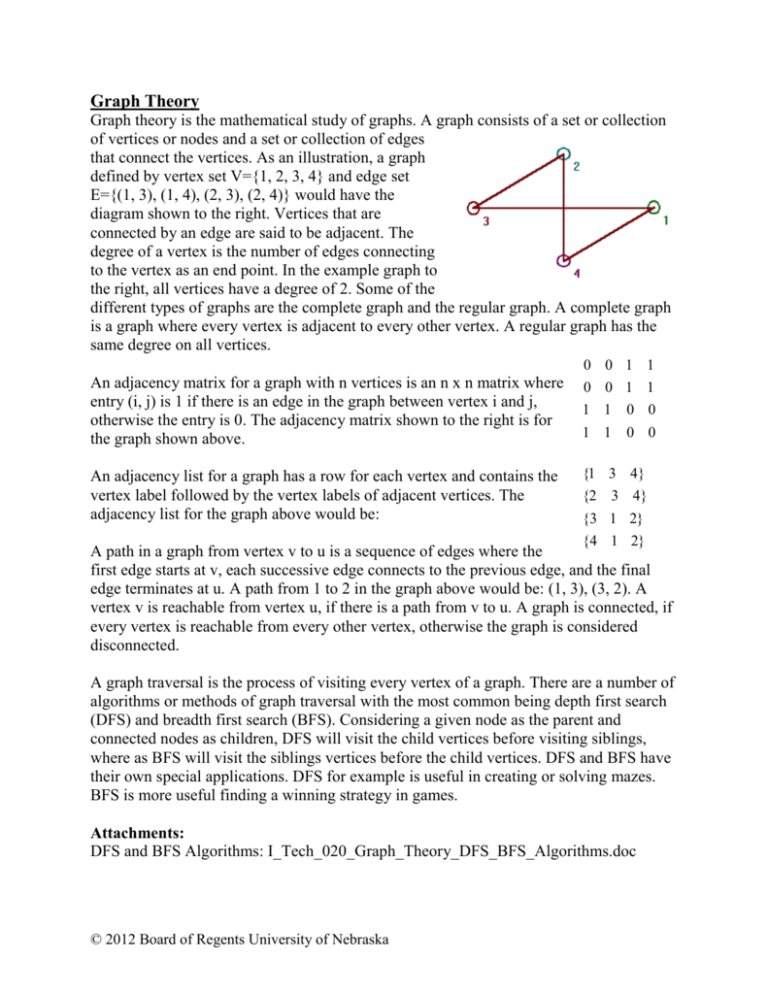
Graph Theory
Graph theory is the mathematical study of graphs. A graph consists of a set or collection
of vertices or nodes and a set or collection of edges
that connect the vertices. As an illustration, a graph
defined by vertex set V={1, 2, 3, 4} and edge set
E={(1, 3), (1, 4), (2, 3), (2, 4)} would have the
diagram shown to the right. Vertices that are
connected by an edge are said to be adjacent. The
degree of a vertex is the number of edges connecting
to the vertex as an end point. In the example graph to
the right, all vertices have a degree of 2. Some of the
different types of graphs are the complete graph and the regular graph. A complete graph
is a graph where every vertex is adjacent to every other vertex. A regular graph has the
same degree on all vertices.
An adjacency matrix for a graph with n vertices is an n x n matrix where
entry (i, j) is 1 if there is an edge in the graph between vertex i and j,
otherwise the entry is 0. The adjacency matrix shown to the right is for
the graph shown above.
An adjacency list for a graph has a row for each vertex and contains the
vertex label followed by the vertex labels of adjacent vertices. The
adjacency list for the graph above would be:
0 0 1 1
0 0 1 1
1 1
0 0
1 1
0 0
{1 3 4}
{2 3 4}
{3 1 2}
{4 1 2}
A path in a graph from vertex v to u is a sequence of edges where the
first edge starts at v, each successive edge connects to the previous edge, and the final
edge terminates at u. A path from 1 to 2 in the graph above would be: (1, 3), (3, 2). A
vertex v is reachable from vertex u, if there is a path from v to u. Agraph is connected, if
every vertex is reachable from every other vertex, otherwise the graph is considered
disconnected.
A graph traversal is the process of visiting every vertex of a graph. There are a number of
algorithms or methods of graph traversal with the most common being depth first search
(DFS) and breadth first search (BFS). Considering a given node as the parent and
connected nodes as children, DFS will visit the child vertices before visiting siblings,
where as BFS will visit the siblings vertices before the child vertices. DFS and BFS have
their own special applications. DFS for example is useful in creating or solving mazes.
BFS is more useful finding a winning strategy in games.
Attachments:
DFS and BFS Algorithms: I_Tech_020_Graph_Theory_DFS_BFS_Algorithms.doc
© 2012 Board of Regents University of Nebraska





